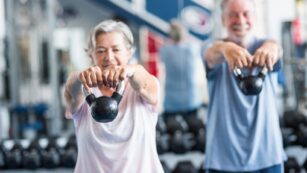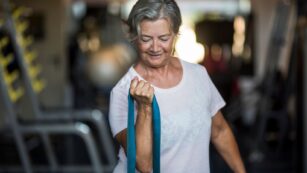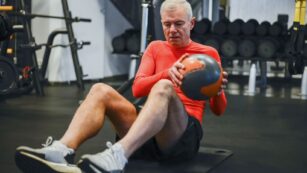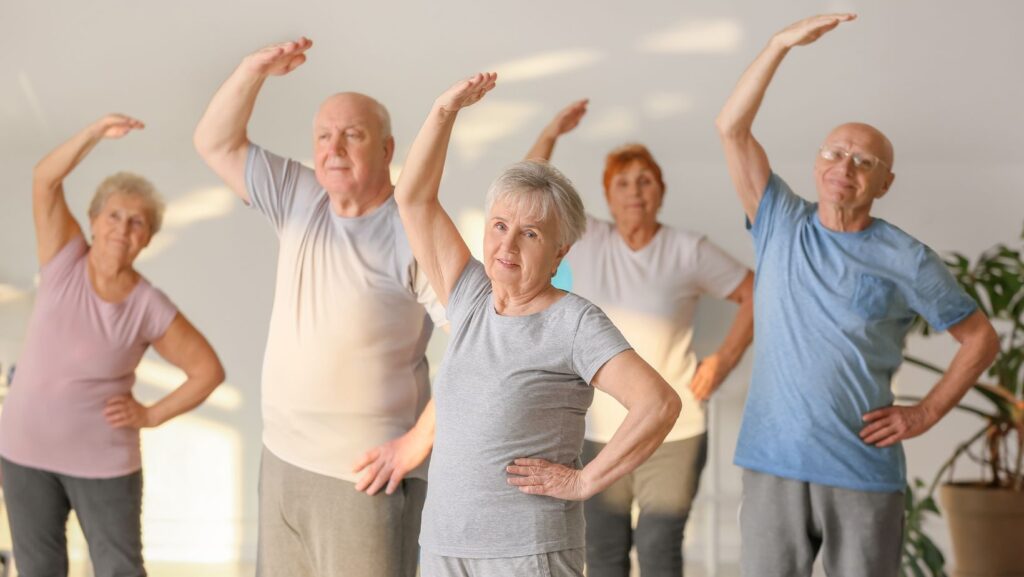Staying active is vital at any age, but for seniors, it’s especially crucial for maintaining health and independence. AARP recognizes this need and offers a variety of exercises tailored specifically for older adults. These routines are designed to enhance flexibility, strength, and balance, reducing the risk of falls and improving overall quality of life.
AARP Exercises for Seniors
AARP offers tailor-made exercise programs for seniors designed to meet their unique health needs and capacity. These programs not only improve seniors’ physical health but also positively impact their mental and emotional well-being.
Physical Health Benefits
 Regular participation in AARP’s customized exercises enhances seniors’ cardiovascular health, leading to improved blood circulation and a reduced risk of heart diseases. Exercises like water aerobics or gentle yoga, increase flexibility, strengthen muscles, and improve joint stability. They also boost balance, reducing the risk of falls, a common concern among older adults. Studies show that seniors engaging in regular physical activity experience fewer mobility-related issues.
Regular participation in AARP’s customized exercises enhances seniors’ cardiovascular health, leading to improved blood circulation and a reduced risk of heart diseases. Exercises like water aerobics or gentle yoga, increase flexibility, strengthen muscles, and improve joint stability. They also boost balance, reducing the risk of falls, a common concern among older adults. Studies show that seniors engaging in regular physical activity experience fewer mobility-related issues.
Mental Health Benefits
Engaging in AARP’s exercise programs also supports mental health through the promotion of social interactions and the reduction of isolation. Group exercises, such as walking groups, create opportunities for socialization, fostering a sense of community and belonging. Moreover, regular physical activity is known to reduce symptoms of depression and anxiety. Exercise stimulates the release of endorphins, often referred to as ‘feel-good’ hormones, which naturally elevate mood and work as a stress reliever. This emotional uplift is crucial for maintaining mental health and cognitive function as seniors age.
Key Types of AARP Recommended Exercises
This section highlights the key types of exercises recommended by the AARP to enhance senior health and well-being, focusing on cardiovascular, strength training, and flexibility and balance exercises.
Cardiovascular Exercises
 Cardiovascular exercises play a crucial role in improving heart health and enhancing endurance among seniors. AARP suggests activities like brisk walking, cycling, and aqua aerobics. These exercises help increase heart rate, which can significantly improve blood circulation and reduce the risk of cardiovascular diseases. Regular cardiovascular exercise assists seniors in managing their weight, lowering blood pressure, and increasing overall energy levels.
Cardiovascular exercises play a crucial role in improving heart health and enhancing endurance among seniors. AARP suggests activities like brisk walking, cycling, and aqua aerobics. These exercises help increase heart rate, which can significantly improve blood circulation and reduce the risk of cardiovascular diseases. Regular cardiovascular exercise assists seniors in managing their weight, lowering blood pressure, and increasing overall energy levels.
Strength training is essential for maintaining muscle mass and bone density as one ages. AARP recommends exercises such as light weightlifting, resistance band workouts, and body-weight exercises like squats and push-ups. Engaging in strength training helps seniors maintain their independence by enhancing muscle strength and endurance, which is vital for daily activities. Moreover, it contributes to better joint flexibility and can lower the risk of osteoporosis and other related injuries.
Flexibility and Balance Exercises
Flexibility and balance exercises are fundamental in preventing falls, which are a major risk for seniors. Yoga, tai chi, and gentle stretching are among the top activities endorsed by AARP. These exercises not only improve flexibility but also enhance balance and coordination, crucial factors in reducing fall incidents. Regular practice of these exercises also benefits mental health by relieving stress, improving mood, and promoting a more restful sleep pattern.
Engaging Technology in Senior Fitness
 AARP’s exercise programs are a cornerstone for senior health, providing a comprehensive approach that accommodates physical, mental, and social well-being. They’ve proven essential in helping seniors maintain independence and vitality through a variety of accessible activities. By integrating these exercises into their daily routine, seniors can enjoy enhanced health benefits and a stronger sense of community.
AARP’s exercise programs are a cornerstone for senior health, providing a comprehensive approach that accommodates physical, mental, and social well-being. They’ve proven essential in helping seniors maintain independence and vitality through a variety of accessible activities. By integrating these exercises into their daily routine, seniors can enjoy enhanced health benefits and a stronger sense of community.
These programs also emphasize the importance of safety and individual adaptability, ensuring that every senior can participate without fear of injury. This thoughtful approach helps seniors not only stay active but do so in a manner that respects their body’s limits and their personal health needs.
As seniors continue to embrace these beneficial practices, they’ll find that maintaining an active lifestyle is not just possible but enjoyable. AARP’s commitment to senior fitness is more than just a program—it’s a pathway to a healthier, more fulfilling life.

